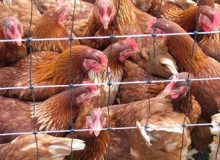Bird flu: New mechanism of circulation and transmission found

An international team of Italy-US scientists reports discovery of a new mechanism of avian influenza virus circulation and transmission in nature.
A team of scientists, led by Mauro Delogu, virologist from the Veterinary Faculty of the Bologna University and researchers from the Istituto Superiore di Sanità, Istituto Zooprofilattico Sperimentale della Lombardia e dell’Emilia and St. Jude Children’s Research Hospital (Memphis, Tennessee) have discovered a new way of avian influenza transmission.
The study, which offers new insights into ecology, surveillance and prevention strategies of avian influenza viruses (AIVs), may ultimately be important in the fight against influenza.
The scientists actually discovered that the preen oil gland secretions, by which all aquatic birds make their feathers waterproof, support a natural mechanism that concentrates AIVs from water onto birds’ bodies. They found that a progressive virus “sticking” on feathers occurs because AIV-contaminated waters interact with the preen oil gland secretion. Since waterbirds use to spread preen oil over their own (self-preening) or other birds’ (allo-preening) plumage, it is easily understandable how these preening activities could facilitate the diffusion of the viruses in nature. The discovery, adds Delogu, has also important implications in the surveillance of avian influenza viruses.
In fact, virus on feathers could escape detection by the current surveillance strategies which assay the virus secreted in the cloacal and tracheal samples only. Lack of detection of these viruses may greatly complicate surveillance and rapid responses to new virus emergence and spread. For this reason, Delogu said, in routine surveillance programs, additional sampling methods could be necessary to detect AIVs on birds’ bodies.
Our results also suggest that a preened body surface could be the common denominator that explains how AIV infection occurs in different taxonomic groups of aquatic birds and future studies are needed to determine the common uropygial component that could promote interaction with AIVs in all aquatic bird species. Studies to reproduce the preening-mediated AIV infection mechanism in the animal model are in progress.
Finally, Delogu concludes, our discovery really opens a door to explain the highly pathogenic H5N1 circulation and persistence in Eurasia, as well as the only recorded human case of fatal infection passed from wild birds in February 2006. All infected humans were involved in defeathering of dead wild swans after a massive die-off of these aquatic birds occurred in Azerbaijan.













